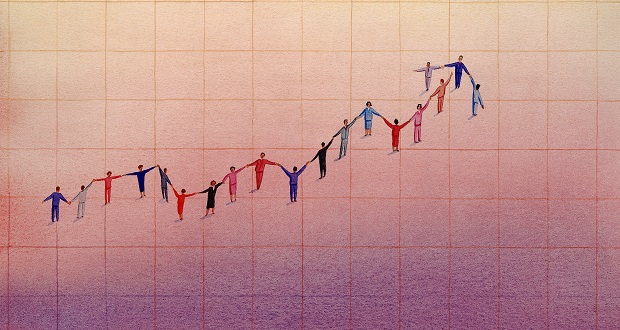
In September, I was laid off from my full-time job, ironically just in time for National Disability Employment Awareness Month. As a disabled worker, unemployment can be terrifying. There are health insurance payments to worry about, applying for unemployment, and of course, the ever-present question: “What do I do now?” or rather, “What can I do now?”
I was quite fortunate; not only was I able to save for the eventuality of leaving my job, but I had a second side income from freelance writing to fall back on. Still, this left me wondering how successful other disabled people are in the workplace and how they recover from a blow like unemployment. Do we even know?
That question, and the research I was already doing as Co-Chair of the American Society of Journalists and Authors (ASJA)’s DEAI Committee, led me to dig deeper. What I found was extremely limited; essentially, we know very little about people with disabilities in the workplace.
We know, for example, that disabled workers make up nearly 30% of the workforce, according to the Centers for Disease Control (CDC). We also know that disabled workers have an unemployment rate twice as high as that of nondisabled workers: 8.3% compared to 4.2% as of August 2024.
Based on my research, there are three major reasons why we know so little about disabled people in the workplace.
First, disability is hard to define. The Americans with Disabilities Act (ADA) defines a person with a disability as someone who “has physical or mental impairment that substantially limits one or more major life activities… has a history or record of such an impairment [or] is perceived by others as having such an impairment.” The CDC takes the definition even further: “A disability is any condition of the body or mind (impairment) that makes it more difficult for the person with the condition to do certain activities (activity limitation) and interact with the world around them (participation restrictions).”
These are vague terms and for good reason: disability is not always a constant. Symptoms can ebb and flow and range from temporary or permanent due to injury or illness.
Second, few workers self-disclose disabilities. According to a 2023 report by Disability:IN, less than 5% (4.6%) actually self-identify as a person with a disability, even with support from their employers.
While I did self-disclose my disability to my workplace, it was not a cut-and-dried process. Despite the overwhelming support from my workplace and coworkers, I was still fearful of discrimination and not being “able enough” to complete my work tasks, even with reasonable accommodations.
Finally, many disabled workers turn to self-employment, bypassing the need for disability disclosure for work accommodations. According to data from the Census Bureau and BLS, 4.2% of small business owners in the U.S. and 5.7% of unincorporated freelancers and gig workers have self-disclosed disabilities. That’s nearly 10% of self-employed workers compared to just 3.8% of full-time employed (W-2) workers.
Unemployment comes with a lot of change and in the current job climate, it’s hard not to let fears of finances and the future become overwhelming. I’ve faced constant roadblocks as an unemployed person, from learning the limitations of COBRA to waiting for hours for an unemployment call. Over a month after losing my job, I am still struggling to manage the logistics. Even unemployment, it seems, is inaccessible to many, and it’s truly no wonder that people like me end up staying quiet about their conditions or opting for more control over their schedules and careers.
By shedding light on the state of people with disabilities in the workplace, we can better understand the challenges they (we) face. More targeted research and a better understanding of disabled workers’ barriers to entry can also give us the tools to offer solutions for short and long-term support throughout the employee lifecycle.


















